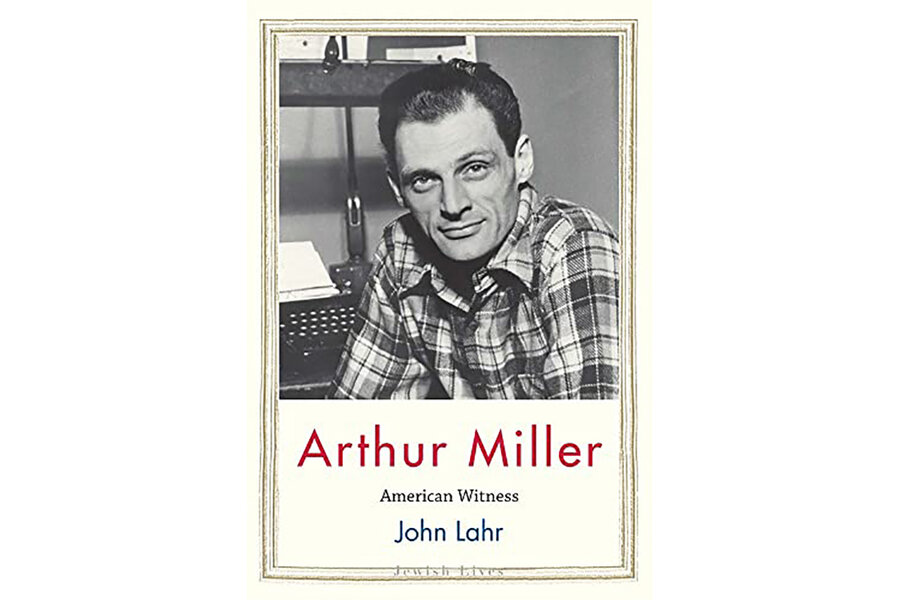
John Lahr’s biography of Arthur Miller opens with a riveting chapter on the creation and the electric 1949 debut of the playwright’s masterwork, “Death of a Salesman.” Lahr calls the play’s impact on American theater “seismic.” But at the first performance, when the curtain came down, the audience sat in stunned silence, “like a funeral,” Miller recalled. “I didn’t know whether the show was dead or alive.… Finally, someone thought to applaud, and then the house came apart.”
From there, the sharp, insightful “Arthur Miller: American Witness,” part of Yale University Press’ Jewish Lives series, goes back to the beginning, tracing the twists of Miller’s New York City childhood. Born in 1915, the playwright spent his early years in privilege in a Harlem townhouse until his business owner father, a whiz with numbers who couldn’t read or write, lost everything in the Depression and relocated the family to greatly reduced circumstances in Brooklyn. Lahr calls the elder Miller’s downfall the defining trauma of Miller’s life, describing what the author calls the “heartbreaking and shocking” moment when the formerly prosperous patriarch asked his teenage son for a quarter for the subway.
Drama critic Lahr, a longtime New Yorker contributor who’s written biographies of Tennessee Williams and Frank Sinatra, among others, is equally adept at narrating Miller’s eventful life story and interpreting the canonical works that sprang from it. The playwright frequently mined his own past for subject matter: Lahr quotes friend and collaborator Elia Kazan, who directed Miller’s “Salesman,” “All My Sons,” and “After the Fall,” as saying, “Art was not a writer who made up stories. His material had to be experienced; he reported on his inner condition.”
“Salesman,” whose tragic protagonist Willy Loman represents, in Lahr’s words, “the aspiration and the desperation of American life,” was inspired in part by a salesman uncle of Miller’s who took his own life. “The Crucible,” the 1953 play that dramatizes the Salem witch trials of 1692, grew out of Miller’s anguish over McCarthyism. (Kazan, a one time member of the Communist Party, famously named names in his testimony before the House Committee on Un-American Activities, resulting in a rupture in the relationship between the two men; Miller, on the other hand, was a hero to the left for his principled testimony, neither naming names nor pleading the Fifth as many prominent witnesses had.) “After the Fall” was a thinly veiled interpretation of Miller’s disastrous five-year marriage to Marilyn Monroe.
The success of “Salesman” had made Miller famous as a public intellectual, but his romance with the movie star made him an international celebrity. “After the Fall,” which premiered in 1964, a year and a half after Monroe’s death, was panned by critics, who dubbed it voyeuristic and distasteful. “Miller, who had refused to name names to HUAC, now stood accused of informing on Monroe,” Lahr writes.
With time, the author notes, “once the memory of both Miller and Monroe had dimmed in the collective unconscious,” the play came to be regarded more generously. Similarly, “The Crucible,” whose original Broadway run lasted only 197 performances, has seen its reputation improve, as the years create distance from the historical events that inspired it. Its early critics, Lahr notes, were unable to see “beyond its connection to the Red Scare to its deeper meanings.”
At roughly 200 pages, “Arthur Miller: American Witness” is a slender volume. Miller’s parents, whose influence looms so large in the early chapters, are hardly mentioned later in the book, although the lifelong friction with his older brother, Kermit, is more fully rendered. In addition, we learn little about Miller, who died in 2005, as a father himself (Monroe was the second of his three wives, and he had four children).
In Lahr’s hands, however, the plays come alive. While the shattering story of Willy Loman has become well-worn over the decades – “the show,” Lahr notes, “is staged somewhere in the world nearly every day of the year” – a new and acclaimed Broadway revival featuring a cast of Black actors is proof of its continued relevance. While Miller’s critical reputation rose and fell throughout his lifetime, Lahr’s perceptive book makes a strong case for the enduring relevance of the playwright as well.
